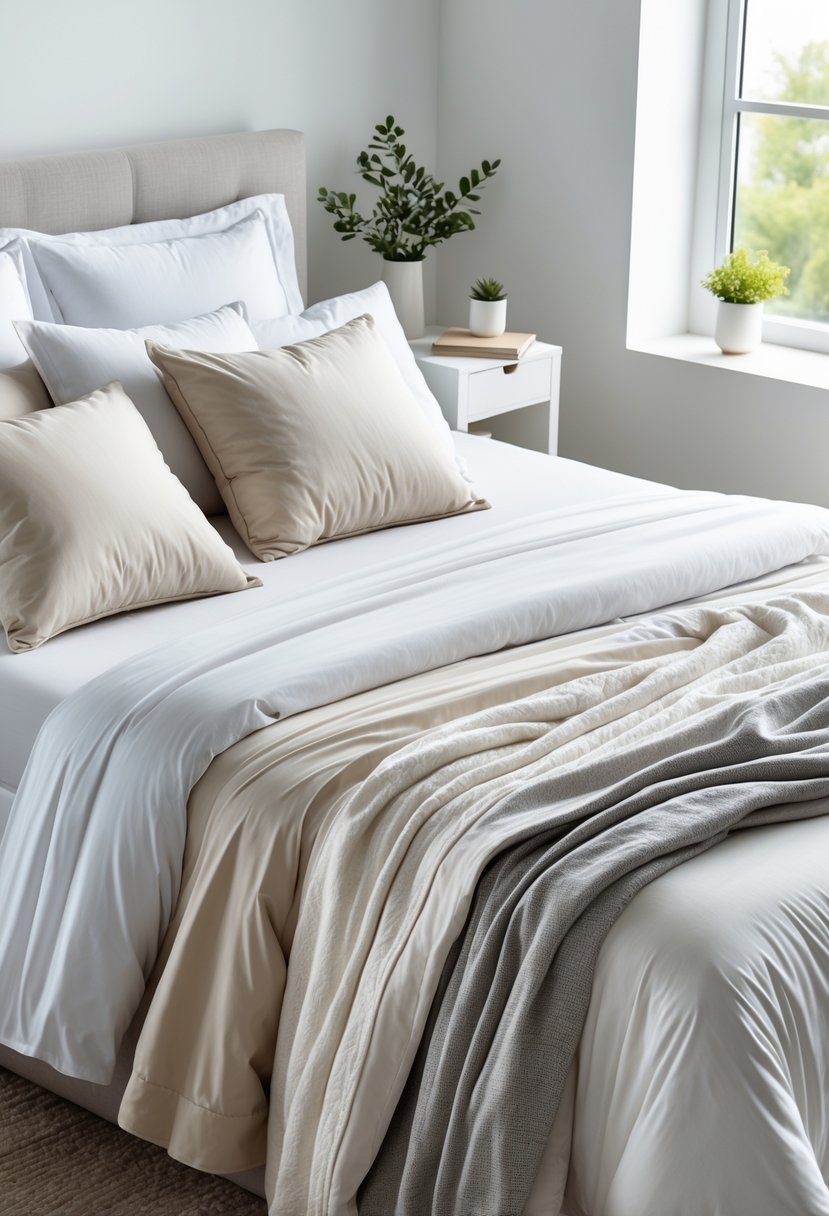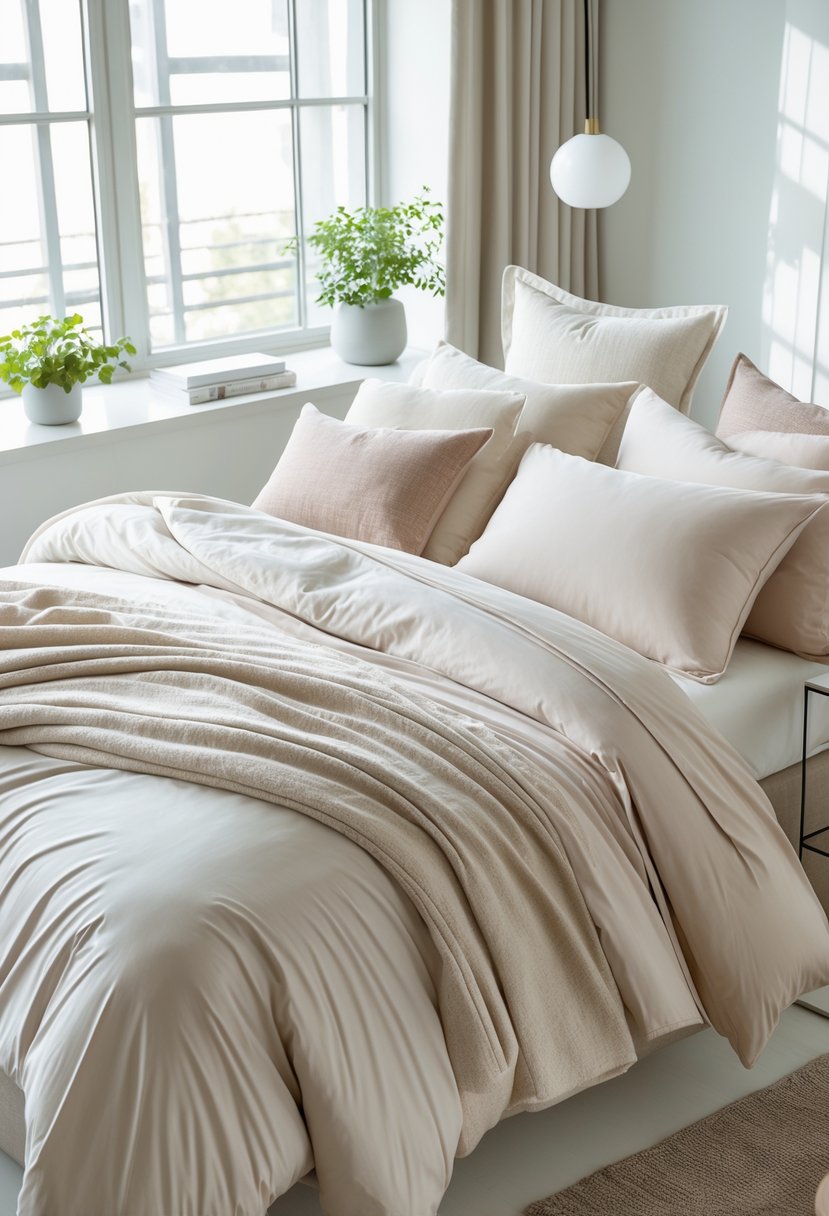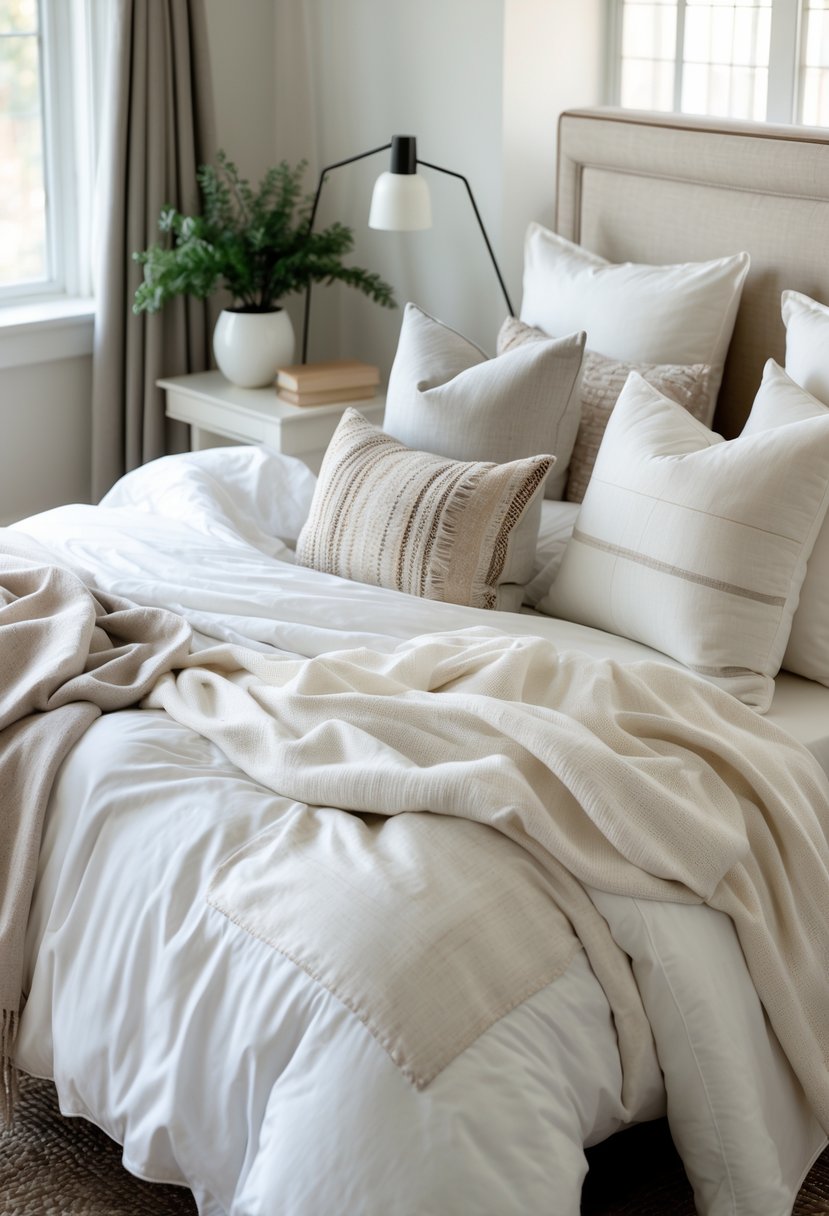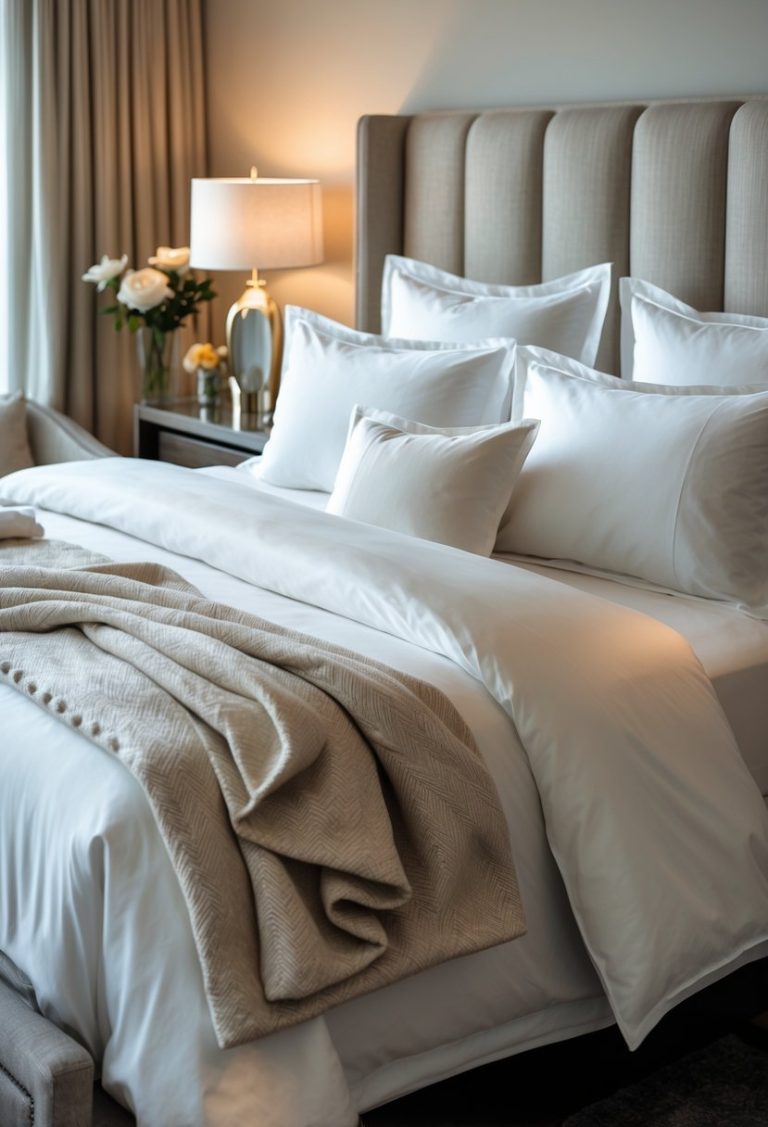How to Layer Bedding for Maximum Comfort and Style
Layering bedding is about combining sheets, blankets, pillows, and covers to make a bed look inviting and feel comfortable. The key to layering bedding well is to start with clean, soft sheets and then add different textures and weights of blankets and pillows to create a cozy, balanced look.

Using a mix of duvets, quilts, throws, and various pillow sizes helps provide both warmth and style. When done right, layered bedding improves the bedroom’s appearance and makes it easier to adjust to changing temperatures.
Essential Bedding Layers

Layering bedding starts with protecting the mattress, choosing the right sheets, and then adding comfort on top. Each layer plays a specific role in comfort, hygiene, and style, and selecting quality items will improve sleep quality.
Choosing the Right Mattress Protector
A mattress protector guards against spills, allergens, and dust mites. It extends the life of the mattress and helps keep it clean. Look for a protector that is waterproof but also breathable. This prevents moisture buildup while protecting the mattress.
Fabric matters. Cotton protectors are soft and breathable, while those with a polyurethane backing offer better waterproofing. The protector should fit snugly without shifting. Consider machine-washable options for easy cleaning.
Some protectors add a thin layer of padding, which can increase comfort slightly without extra bulk. Choose hypoallergenic materials if allergies are a concern. A good mattress protector is the foundation for a healthy sleep environment.
Selecting Quality Sheets
Sheets are the next layer, touching the skin directly. Thread count matters but isn’t the only factor. Sheets made from pure cotton, linen, or blends with natural fibers work well for breathability and durability.
Look for sheets with a thread count between 200 and 400 for good softness and breathability. Percale weaves feel crisp, while sateen weaves feel smooth and silky. Choose based on personal comfort preferences.
Fit is important too. Deep pockets help sheets stay on thicker mattresses with toppers or pads. Choose colors or patterns that match the room’s style but keep the focus on comfort and quality of the fabric.
Adding a Comfort Layer
The comfort layer adds warmth, softness, and style. Common choices include blankets, quilts, duvets, or comforters. Each offers different levels of warmth and texture.
Duvets and comforters usually have fillings like down, synthetic fibers, or wool, offering various warmth levels. Quilts and blankets add texture but may be lighter. Layering several thin blankets can provide adjustable warmth.
Use a duvet cover for easy cleaning and to change the look. Throw pillows and decorative blankets add style but don’t replace the main comfort layer. Choose items that balance comfort, warmth, and simplicity for better rest.
Step-By-Step Guide to Layering Bedding

Layering bedding involves careful placement of each piece to ensure comfort and style. Starting from the mattress, each layer builds on the last to create a cozy and well-organized bed. Attention to material, order, and neatness is key.
Starting With the Foundation
The foundation begins with a fitted sheet, tightly wrapped around the mattress corners. This sheet protects the mattress and provides a smooth surface.
Next, add a flat sheet. It should lie flat and be tucked neatly under the mattress at the foot and sides. The flat sheet keeps the sleeper more comfortable and clean.
For extra softness, a mattress protector or pad can be placed under the fitted sheet. This adds a layer of comfort and extends the life of the mattress.
Placing the Top Sheet
The top sheet goes directly over the flat sheet and under any blankets or quilt layers. It should be well spread and tucked in at the foot of the bed.
This sheet acts as a barrier between the sleeper and heavier bedding. For warmth or cooling, the top sheet can be left loose or tucked tightly.
Many prefer the finished side of the top sheet facing out, for a clean look. Matching the sheet color or pattern with other layers adds cohesion to the bed’s appearance.
Incorporating Blankets and Quilt
After the sheets, add blankets or a quilt for warmth and texture. A lightweight blanket works well for mild climates, while heavier quilts offer more heat.
Fold blankets neatly at the foot or across the middle of the bed if not covering it fully. This keeps the bedding tidy and ready for use.
Quilts, often patterned or embroidered, add visual interest. They go on top of sheets and below the duvet or comforter.
Finishing With Duvets and Comforters
Duvets or comforters form the final and thickest layer. They provide primary warmth and are usually protected by a duvet cover for easy cleaning.
Spread the duvet evenly across the bed, letting it hang down the sides. Fluff and smooth it out to avoid lumps.
Add decorative pillows or throws after the duvet to complete the layered look. These extras improve both comfort and style without complicating the bedding’s function.
Styling Tips for Layered Bedding

Layering bedding well involves careful color and pattern choices, smart pillow placement, and adjusting materials to match the season. These details create a bed that looks neat and feels comfortable.
Mixing Colors and Patterns
Start with a base color for sheets that is neutral or soft, such as white, beige, or light gray. This sets a calm background. Add interest by choosing two or three complementary colors for blankets and duvet covers. For example, pairing navy with soft pink and cream can work well.
When mixing patterns, use different sizes and shapes to avoid clutter. A small, repeating pattern like dots can work with a larger, bold design like stripes or florals. Keep one pattern in a neutral or muted tone to balance bright or dark patterns.
Quick tips:
- Use a color wheel to find matching or contrasting colors
- Stick to two patterned pieces per bed layer max
- Use solid colors to break up busy designs
Arranging Decorative Pillows
Place larger pillows at the back, such as euro shams or big square pillows. These give height and structure. In front of them, use standard or queen pillows in pillowcases that match or contrast the sheets.
Next, add smaller pillows like bolsters or decorative throw pillows. Arrange these from largest to smallest and consider mixing plain pillows with ones that have texture or embroidery. This adds depth without making the bed look messy.
Pillow arrangement example:
| Position | Pillow Type | Purpose |
|---|---|---|
| Back row | Euro shams (26″ square) | Support, height |
| Middle row | Standard/Queen pillows | Matching bedding |
| Front row | Small throw pillows | Decoration, texture |
Adapting Bedding for Seasons
Use lighter fabrics and fewer layers in warm weather. Cotton or linen sheets and a thin quilt or blanket work well in spring and summer. Bright or cool colors help keep the bed feeling fresh.
In colder months, add thick comforters, quilts, and even a plush throw. Materials like flannel sheets or velvet pillow covers trap heat better. Darker or warmer color schemes, like deep reds or forest greens, match the cozy feel.
Switching layers seasonally not only improves comfort but also keeps the bedding looking appropriate year-round.

